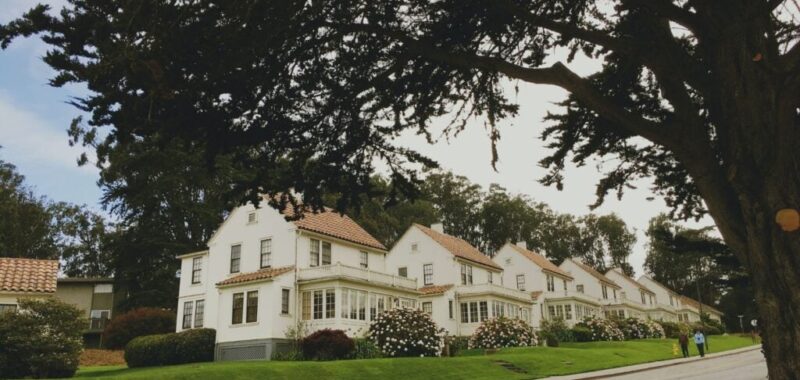San Jose, California, a major tech hub, tallied single-family existing-home prices exceeding $2 million in 2Q for the first time since the National Association of Realtors began tracking home prices in 1979.
Whether it’s refining your business model, mastering new technologies, or discovering strategies to capitalize on the next market surge, Inman Connect New York will prepare you to take bold steps forward. The Next Chapter is about to begin. Be part of it. Join us and thousands of real estate leaders Jan. 22-24, 2025.
Nearly 90 percent of metro areas in the U.S. saw single-family existing-home sale prices grow during the second quarter of 2024, down from 93 percent of metros the quarter before, the National Association of Realtors (NAR) reported on Tuesday.
The median single-family existing-home price rose 4.9 percent year over year to $422,100 as the 30-year fixed mortgage rate hovered between 6.82 percent and 7.22 percent.
One U.S. metro’s median single-family existing-home price also exceeded $2 million for the first time since NAR began tracking metro home prices in 1979: San Jose, California, where the median price hit $2.008 million.

Lawrence Yun
“The record-high home prices in most metro markets bring good and bad news,” NAR Chief Economist Lawrence Yun said in a statement. “It’s terrific news for homeowners who are moving ahead in wealth gains. However, it’s difficult for those wanting to buy a home as the required income to qualify has roughly doubled from just a few years ago.”
The South posted the largest share of single-family existing-home sales during the quarter at 45.5 percent where home prices grew by 2.3 percent on an annual basis. The Northeast saw the greatest price growth at 9.8 percent, while prices grew 5.5 percent in the Midwest and 5.4 percent in the West.
Five out of the 10 metro areas with the largest annual median price growth were located in the Northeast, and all 10 metros posted gains of at least 14.1 percent.
Those markets included: Racine, Wisconsin (19.8 percent); Glens Falls, New York (19.8 percent); El Paso, Texas (19.2 percent); Morristown, Tennessee (16.7 percent); Machester-Nashua, New Hampshire (16.2 percent); Anaheim-Santa Ana-Irvine, California (15.0 percent); New York-Jersey City-White Plains, New York-New Jersey (14.8 percent); Springfield, Illinois (14.8 percent) Dutchess County-Putnam County, New York (14.2 percent); and Trenton, New Jersey (14.1 percent).
Seven out of the top 10 priciest markets in the U.S. were located in California. In addition to San Jose, San Francisco-Oakland-Hayward, California (1.45 million; 8.5 percent); Anaheim-Santa Ana-Irvine, California ($1.44 million; 15 percent); Urban Honolulu, Hawaii ($1.1 million; 3.8 percent); and San Diego-Carlsbad, California ($1.05 million; 11.4 percent) made up the top five priciest markets.
The number of markets that saw home price declines grew from the previous quarter, with nearly 10 percent of markets posting price declines, up from 7 percent during Q1 2024.
“Previously fast-gaining markets took a breather in the past quarter, including Nashville, Durham, Austin, and several Florida metro areas,” Yun added. “Conversely, some markets that experienced declines last year have roared back, such as San Francisco, Anaheim, and New York.”
Housing became less affordable during the quarter as mortgage rates rose, with the monthly mortgage payment on a typical existing single-family home with a 20 percent down payment up 11.1 percent from the previous quarter to $2,262. That payment was also up 10.3 percent year over year. Families now typically spend 26.5 percent of their income on their mortgage payments, up from 24.2 percent during the first quarter of 2024 and up from 25.3 percent one year ago.
Limited inventory and rising home prices led to less affordable housing options for first-time buyers during the second quarter. On a typical starter home priced at $358,800 with a 10 percent down payment, the monthly mortgage payment rose 11.1 percent quarter over quarter to $2,218. That price jump is also 10.3 percent or $207 higher than one year ago. First-time buyers typically spent 40 percent of their income on mortgage payments, up from 36.5 percent during the first quarter of 2024.
Families needed a qualifying income of at least $100,000 in a growing number of markets during the second quarter in order to afford a 10 percent down payment mortgage — in 48 percent of markets, compared to 40.7 percent the previous quarter. Meanwhile, families needed a qualifying income of less than $50,000 to afford a home in 2.7 percent of markets, down from 4.5 percent the previous quarter.
Still, as mortgage rates continue to drop and supply grows, Yun showed optimism.
“Housing affordability will improve in upcoming months,” he said. “Mortgage rates have fallen measurably, and more supply is reaching the market. Therefore, the income required to buy a home will decrease.”
Email Lillian Dickerson

